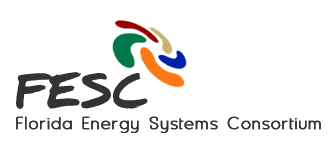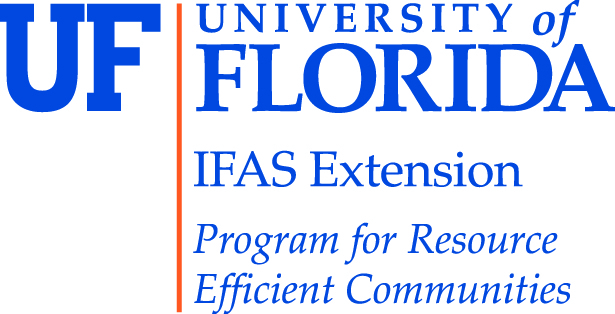Credit: This resource is reproduced in full, with mild formatting and URL hotlink edits, from the fact sheet, UF/IFAS – Energy Efficient Homes: Indoor Air Quality and Energy (EDIS-FCS3275), [1] by Kathleen C. Ruppert, Wendell A. Porter, Randall A. Cantrell, and Hyun-Jeong Lee [2]
Quick Facts
- Indoor air quality influences occupant health.
- Some pollutants found in homes come from outside, but many indoor air pollutants are a result of volatile compounds produced inside by the structure itself, paint, carpet, furnishings, and many other sources.
- Improper natural ventilation practices can worsen the indoor air quality problems and increase a home’s energy consumption.
- A properly designed energy-efficient home can help manage a home’s indoor air quality.
Isn’t indoor air healthier than outdoor air?
Many believe the indoor air of typical homes is cleaner and healthier than outdoor air. And, many may presume that keeping polluted outdoor air from entering the home will enable it to maintain clean indoor air.
Unfortunately, this is not necessarily true. The U.S. Environmental Protection Agency (EPA, 2014) indicates that indoor air can actually be more polluted than outdoor air. This is because although some pollutants may come from outside, many of our indoor air pollutants are produced inside the home. These pollutants can come from your home’s structure, paint, carpet, furnishings, or many other sources inside the home. What’s worse, if you fail to bring in enough outdoor air to dilute the level of indoor pollutants while also venting those pollutants to the outside, they can accumulate to levels high enough to cause health and comfort issues for the occupants.
Should I frequently ventilate the inside of my home to improve indoor air quality?
Many areas of northern Florida can use natural ventilation during the fall and spring months. This can also be the case in the rest of Florida depending on personal levels of comfort. In any case, levels of relative humidity exceeding 70% during long periods of time can eventually lead to mold problems, especially in stagnant air spaces like closets. Just keep a close eye on things like leather shoes in the back of a closet. These will be the first things to start to mold. If this happens, close your windows and operate your air conditioner a little bit more. Natural ventilation is a great way to save energy; just don’t overdo it!
Do energy efficient homes have poorer indoor air quality?
Not necessarily. You can achieve both energy efficiency and healthy indoor air quality through (1) properly designed building construction and technologies, and (2) proper home maintenance practices.
During the 1970s, the world experienced a major energy crisis. Energy prices increased dramatically, and energy savings became a critical factor of housing affordability for most families in the United States. Since then, people have focused on developing building structures and systems to maximize energy conservation. Now individuals are even more motivated to conserve energy due to soaring energy costs.
As a result, building structures have become tighter, which means there are less air exchanges between indoor and outdoor spaces. In Florida, conditioned air provided by heating or cooling equipment should be kept inside the building while unconditioned outdoor air intrusions should largely be kept from entering the building.
Though energy savings has been a major concern for decades, it wasn’t until the 1990s when many researchers started paying attention to its impact on human health, and only in the past several years have builders and homeowners followed suit. Because of that, some people still incorrectly assume that energy-conserving or “energy-tight” homes are more susceptible to indoor air pollution than less energy efficient homes. These people may be surprised to learn that, when properly designed and maintained, energy-efficient homes may have better indoor air quality than leaky, drafty homes.
Simply put, new, energy-efficient homes and older homes that have had energy conservation features correctly installed do not allow as many pollutants to permeate the home in the first place. Effective, properly designed heating, ventilation, and air conditioning systems, bathroom and kitchen exhaust fans, and a tight building shell not only remove excessive moisture and cooking odors in the building, but also can ensure that most outdoor pollutants do not enter the home in the first place. Pollutants that do enter can be removed with controlled ventilation. Remember, in a drafty, inefficient home, there is no way to control the air that enters through cracks and other openings. That air flow is affected by wind speed, topography, vegetation, and many other factors.
When is the right time for natural ventilation?
To discourage mold growth while promoting energy efficiency, it is recommended to keep indoor relative humidity below 70% (ideally between 45% and 60%), and indoor temperature no higher than 68°F in the winter and no lower than 78°F in the summer. When natural ventilation is needed, you can use indoor and outdoor humidity and temperature monitors to judge if it is the right time to do so. If the difference between indoor and outdoor levels is extreme, you may consider another time. Also, keep monitoring indoor relative humidity and temperature levels during natural ventilation and stop when they go over the levels recommended. During times of high humidity, especially during rainstorms, the air conditioner often does not operate long enough to adequately control the indoor relative humidity. However, even if the relative humidity goes higher than 70%, this doesn’t present a problem as long as the relative humidity doesn’t stay that way for an extended period of time.
Do you have any additional tips?
Along with reducing energy costs it is important to keep in mind the health of you and your household. Do not compromise your health for immediate money savings.
Here are some basic tips to control the quality of your home’s indoor air and protect your household from many airborne irritants and/or health problems:
- Seal any air leaks.
- Keep your home dry (indoor relative humidity below 70%—ideally between 45% and 60%).
- Keep your home clean and free from bugs and excessive dust.
- If you use pesticides, do so only as directed in the instructions on the product labels.
- When building new or conducting home improvement projects, choose products that have no or little potential health impact (e.g., little to no off-gassing of VOCs [volatile organic compounds], no formaldehyde, etc.)
- Replace your heating and cooling filters regularly with good quality single-use filters designed for your system. If you have additional concerns about specific allergens, consult with your air conditioning contractor about filtration options more appropriate to your situation.
- Use biodegradable cleaning supplies that do not off-gas.
- If you have an attached garage or a fuel-fired appliance, heater or fireplace, install carbon monoxide alarms as recommended by the EPA or the manufacturer. (“Fuel-fired” means a device that uses kerosene, propane, oil, natural gas, or wood.)
- Do not allow smoking inside your home.
- Install smoke alarms.
References and Resources
Florida Building Code 5th Edition: Building®. (2014). Interior environment — Chapter 12. (To locate the Florida Building Code online go to the Florida Building Codes website and click on Florida Building Code 2014 to gain access to this code as well as others with regard to construction in Florida).
U.S. Consumer Product Safety Commission. The Inside Story: A Guide to Indoor Air Quality.
U.S. Department of Housing and Urban Development and the United States Department of Agriculture. (September 2013). Help yourself to a healthy home: Protect your children’s health. Washington, D.C.: U.S. Department of Housing and Urban Development.
U.S. Environmental Protection Agency. (November 2013). Indoor airPLUS construction specifications.
U.S. Environmental Protection Agency. (October 2011). Healthy indoor environment protocols for home energy upgrades — Guidance for achieving safe and healthy indoor environments during home energy retrofits.
U.S. Environmental Protection Agency. (November 2014). An introduction to indoor air quality (IAQ). Retrieved May 7, 2015.
Footnotes
[1] This document is FCS3275, one of an Energy Efficient Homes series of the Department of Family, Youth and Community Sciences, Florida Cooperative Extension Service, Institute of Food and Agricultural Sciences, University of Florida. This material was initially prepared in June 2008 with the support of the Department of Environmental Protection, Florida Energy Office, which is now the Office of Energy, Florida Department of Agriculture and Consumer Services. This revised version was prepared June 2012 with the support of the Florida Energy Systems Consortium (FESC) and updated May 2015. Any opinions, findings, conclusions, or recommendations expressed herein are those of the author(s) and do not necessarily reflect the views of the sponsoring organizations. Please visit the EDIS website.
[2] Kathleen C. Ruppert, Extension scientist, Program for Resource Efficient Communities; Wendell A. Porter, lecturer and P.E., Department of Agricultural and Biological Engineering; Randall A. Cantrell, assistant professor, Department of Family, Youth and Community Sciences, and Hyun-Jeong Lee, former assistant professor, Department of Family, Youth and Community Sciences; Florida Cooperative Extension Service, Institute of Food and Agricultural Sciences, University of Florida, Gainesville, FL 32611.




